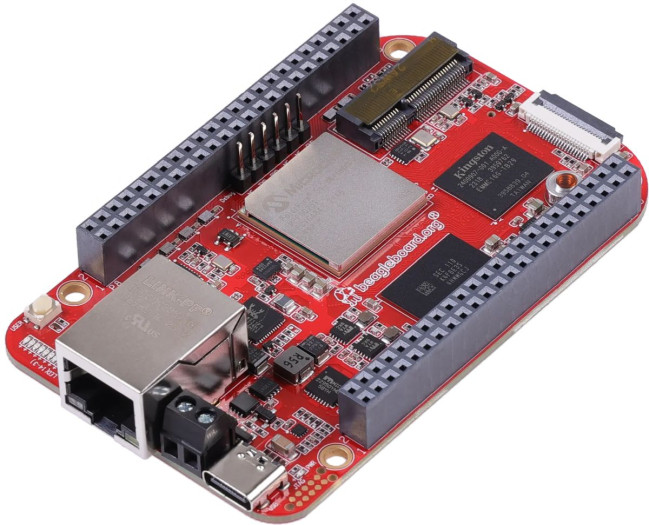2 Likes
1 Shares
The versatility of the Milk-V Duo S is one of its standout features. It comes equipped with a range of connectivity options, including a 10/100 #Ethernet jack for stable wired internet connections and #USB Type-C and Type-A ports for connecting a variety of peripherals. The board also includes a #microSD card reader for expandable storage, and it’s equipped with 512MB of #DDR3 memory, which is more than capable of managing multiple tasks simultaneously. For those who need wireless connectivity, certain models of the Milk-V Duo S also include #WiFi and #Bluetooth, as well as #eMMC storage options for faster data access and improved security.
...
With a starting price of only $11, it is positioned to be within reach of a wide spectrum of users, from hobbyists to professionals.
see: geeky-gadgets.com/mini-pc-with…
Runs with #Linux: milkv.io/docs/pioneer/getting-…
------

The linked article is an excellent primer around Ethernet in the modern era.
The only thing I could add on the basics side, is why Ethernet is actually a twisted pair of cables. The twist alleviates the possibility of EMI (electromagnetic interference) inference by ensuring there is no long, straight lengths of wire that would act as an antenna. Twisting the pairs causes the electromagnetic fields generated by each wire to partially cancel each other out, significantly reducing the overall interference picked up by the cable. This is known as common-mode rejection.
Twisting also helps eliminate crosstalk, which occurs when the signal from one wire leaks into another pair in the same cable. This can also corrupt the data signal and lead to errors. Twisting the pairs helps to keep the magnetic fields of each wire contained, reducing the amount of crosstalk between them.
See https://hackaday.com/2024/02/12/ethernet-for-hackers-the-very-basics/
#Blog, #Ethernet, #technology
Bevor das Jahr 2023 zu Ende geht, möchte ich diesem Profi-sorium herzlich zum 14jährigen Bestehen gratulieren
(Danke für die Idee an @Kathatata)
URI: https://hub.libre.computer/t/2023-09-25-libre-computer-aml-a311d-cc-alta-ai-sbc-announcement/2905
#AML-A311D-CC features:
If you want to know how to use the AI module (NPU):
* https://www.cnx-software.com/2020/01/13/getting-started-with-amlogic-npu-on-khadas-vim3-vim3l/
* https://www.cnx-software.com/2023/11/09/libre-computer-aml-a311d-cc-alta-sbc-features-amlogic-a311d-ai-processor/
* https://forum.khadas.com/c/khadas-vim3/30

URI: https://www.beagleboard.org/boards/beaglev-fire
